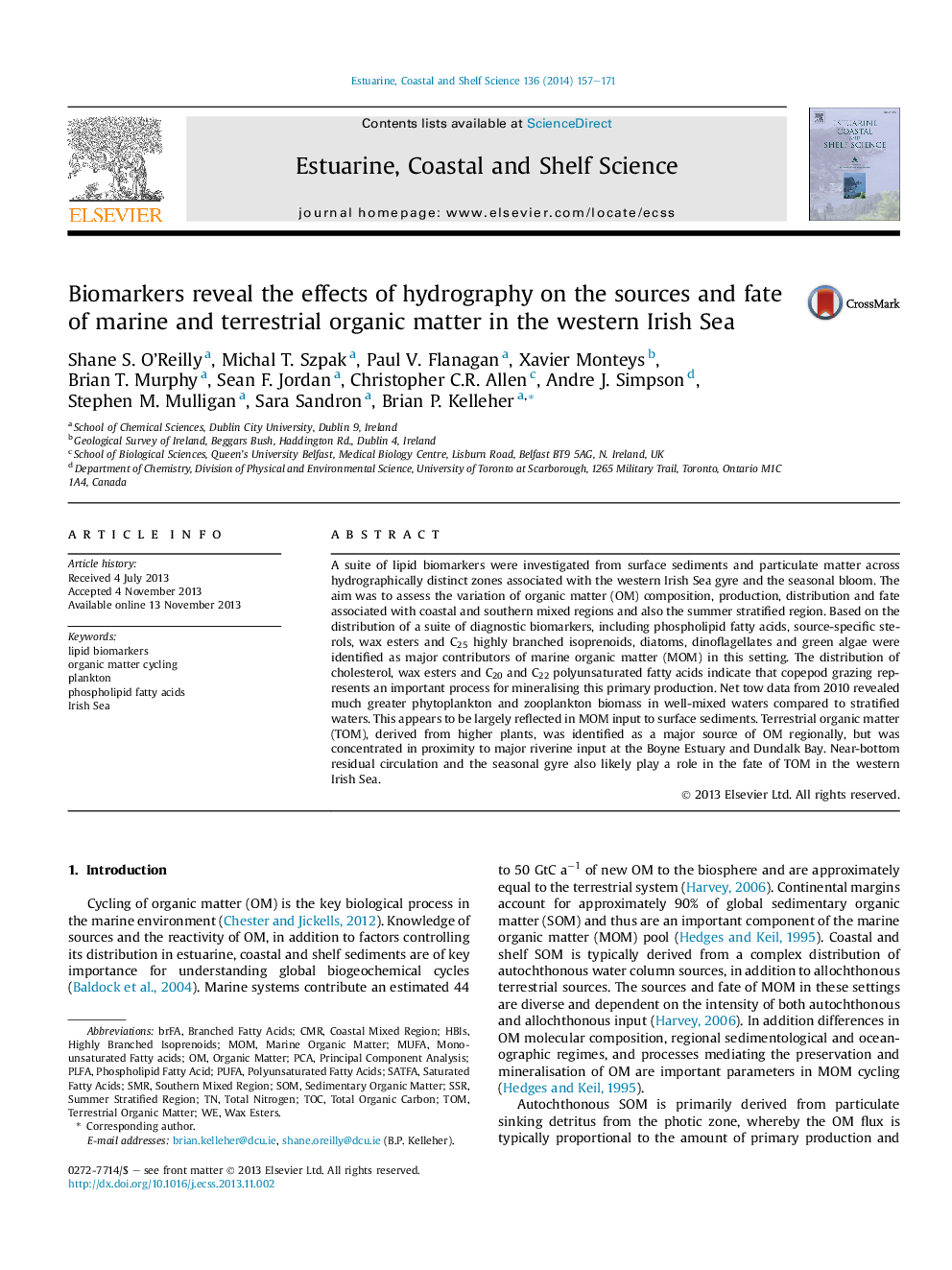| Article ID | Journal | Published Year | Pages | File Type |
|---|---|---|---|---|
| 6385012 | Estuarine, Coastal and Shelf Science | 2014 | 15 Pages |
â¢Spatial and statistical analysis of lipid biomarkers in the Irish Sea was conducted.â¢Diatoms, dinoflagellates and copepods biomass and detritus dominate marine input.â¢Terrestrial input is dominated by higher plants sourced from local riverine input.â¢Hydrographic control on marine biomass, detritus and terrestrial input is apparent.
A suite of lipid biomarkers were investigated from surface sediments and particulate matter across hydrographically distinct zones associated with the western Irish Sea gyre and the seasonal bloom. The aim was to assess the variation of organic matter (OM) composition, production, distribution and fate associated with coastal and southern mixed regions and also the summer stratified region. Based on the distribution of a suite of diagnostic biomarkers, including phospholipid fatty acids, source-specific sterols, wax esters and C25 highly branched isoprenoids, diatoms, dinoflagellates and green algae were identified as major contributors of marine organic matter (MOM) in this setting. The distribution of cholesterol, wax esters and C20 and C22 polyunsaturated fatty acids indicate that copepod grazing represents an important process for mineralising this primary production. Net tow data from 2010 revealed much greater phytoplankton and zooplankton biomass in well-mixed waters compared to stratified waters. This appears to be largely reflected in MOM input to surface sediments. Terrestrial organic matter (TOM), derived from higher plants, was identified as a major source of OM regionally, but was concentrated in proximity to major riverine input at the Boyne Estuary and Dundalk Bay. Near-bottom residual circulation and the seasonal gyre also likely play a role in the fate of TOM in the western Irish Sea.
